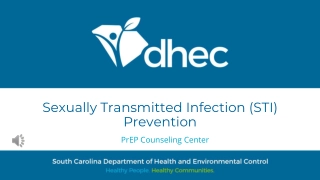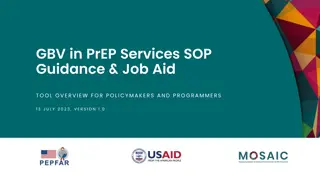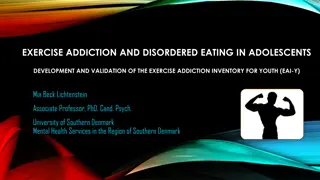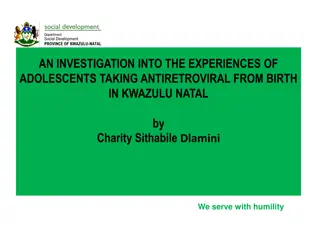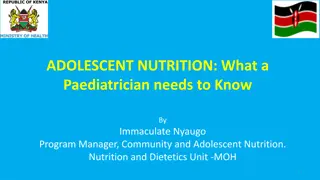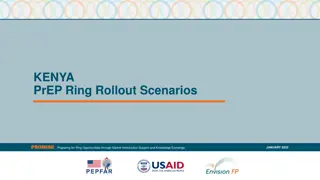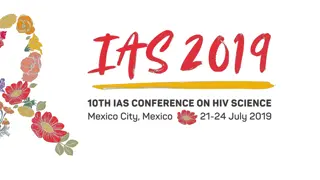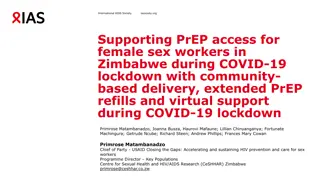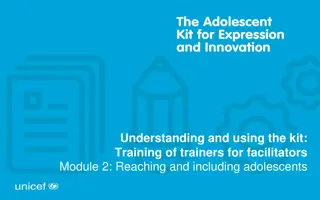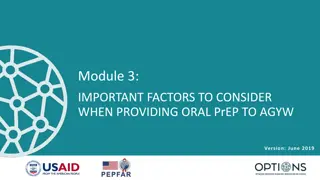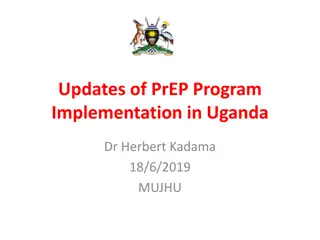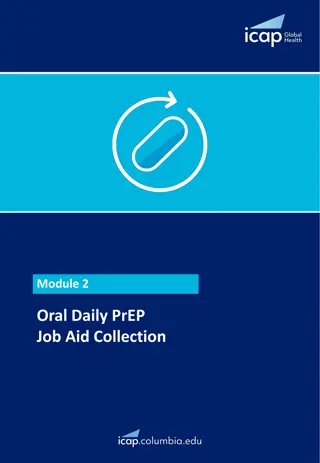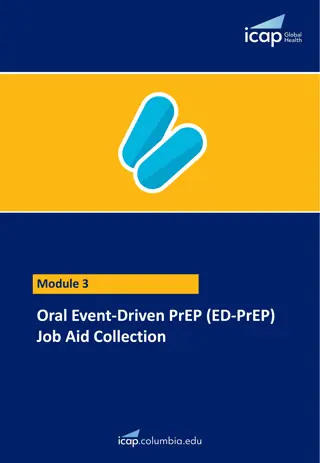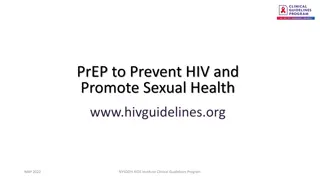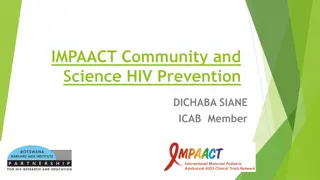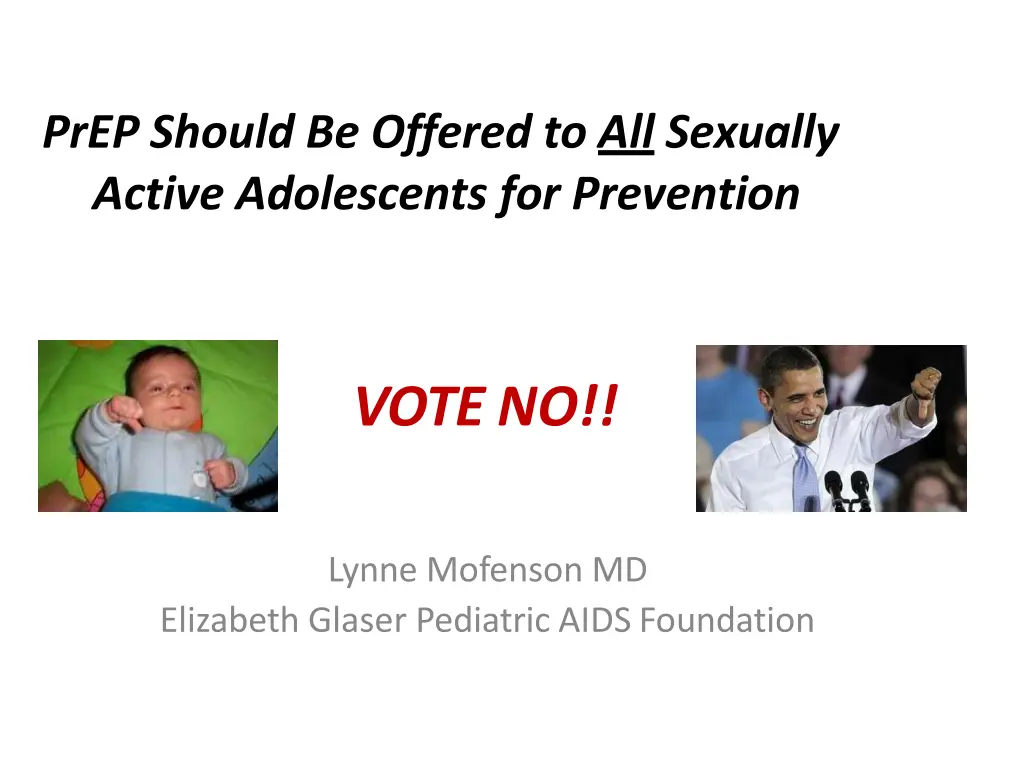
Adolescent HIV Distribution Globally: Implications for Prevention
Understanding the global distribution of adolescent HIV infections is crucial for tailoring prevention strategies. Varied regional risks highlight the need for targeted interventions. Approximately 77% of adolescents living with HIV are concentrated in specific countries, emphasizing the importance of region-specific approaches to combat the epidemic.
Download Presentation

Please find below an Image/Link to download the presentation.
The content on the website is provided AS IS for your information and personal use only. It may not be sold, licensed, or shared on other websites without obtaining consent from the author. If you encounter any issues during the download, it is possible that the publisher has removed the file from their server.
You are allowed to download the files provided on this website for personal or commercial use, subject to the condition that they are used lawfully. All files are the property of their respective owners.
The content on the website is provided AS IS for your information and personal use only. It may not be sold, licensed, or shared on other websites without obtaining consent from the author.
E N D
Presentation Transcript
PrEP Should Be Offered to All Sexually Active Adolescents for Prevention VOTENO!! Lynne Mofenson MD Elizabeth Glaser Pediatric AIDSFoundation
You May Notice I Am Not Audrey Pettifor = Audrey sends her regrets butshe unfortunately is unable toattend I will give it my best but apologize ahead of time to Audrey any errors aremine!
All Adolescents are Not the Same Sexually active adolescents are at risk of HIV. However, this riskis not uniform. Adolescent in countries where HIV is widespread are at higher risk sexual HIV transmission than those in low-prevalence countries. Adolescents who have unprotected intercourse with members of very high- risk groups for HIV (eg., MSM, IDU) are also at high risk. These patterns have important implications for prevention; suggests programs that focus on those at highest risk of infection would be most effective (as well as cost-effective).
Adolescent HIV is Not Uniformly Distributed Globally So Recommendations for Prevention May Not Be Uniform Latin Rest ofthe world 35,000 CEE/CIS MiddleEast America and the Caribbean 83,000 4% andNorth Africa 11,000 1% 2% 18,000 1% 82% of EastAsia and the Pacific 87,000 4% South Asia 130,000 adolescentsliving with HIV come from Africa 7% Westand Central Africa 420,000 21% Easternand Southern Africa 1,200,000 61% Total: Estimated Percentage of Adolescents Aged 10-19 Years Living with HIV by UNICEF Region, 2014 UNICEF 2016 Key findings adolescents and youngpeople
Adolescent HIV is Not Uniformly Distributed Globally So Recommendations for Prevention May Not Be Uniform Estimated % of Adolescents Aged 10-19 Years Living with HIV in Selected Countries, 2014 About half of adolescents living with HIV are in just 6 countries: South Africa, Nigeria, Kenya, India, Mozambique and Tanzania. 77% of adolescents living wit HIV come from only 13 countries h UNICEF 2016 Key findings adolescents and youngpeople
Adolescent HIV is Not Uniformly Distributed Globally So Recommendations for Prevention May Not Be Uniform Estimated % o A f Ad r ole escen y ts A o ged u 10-1 r 9 Y e eara s lly going to Living with HIV in Selected Countries, 2014 recommend that ALL sexually-active youth world-wide should receive PrEP w h e nAhb oiugthh a l fHo fIaVd o l e s c e n t s living with HIV are 77% o fiand ocl eisdc een tnsl icv ien g wisi tresitnrjuisctt6ec odu ntt roi e s : h South Africa, Nigeria, Kenya, India, Mozambique and T anzania. HIV come from only 13 countries only a few cou ntries? UNICEF 2016 Key findings adolescents and youngpeople
HIV Prevalence by Age and Gender Among South African Youth Age 15-24 Years 55% 50% Males 45% Females 40% 95% Confidence Interval 35% 31.2% 28.9% 30% 26.3% 25.0% 25% 20% 14.4% 13.8% 15% 12.2% 11.0% 9.4% 10% 7.9% 4.1% 3.6% 6.0% 5.8% 4.0% 4.1% 5% 2.6% 2.3% 2.1% 2.0% 0% Age 15 Age 16 Age 17 Age 18 Age 19 Age 20 Age 21 Age 22 Age 23 Age 24 Pettifor A, et al. AIDS 2005, 19:1525-1534.
HIV Incidence by Age in Young Women in HPTN 068 Incidence only >3% in young women at age 19 years orolder. Incidence in adolescent men is even lower until reach mid-20 s. 6.0% 4.9% 4.8% 5.0% HIV Incidence 4.0% 3.6% 3.0% 1.9% 1.8% 2.0% 1.3% 1.0% 0.03% 0.0% 17 Age in Years 18 19 20 >=21 <=15 16 Pettifor A, et al. 2015unpublished
Epidemiology of Adolescent HIV in the United States Is VeryDifferent Diagnoses of HIV in Adolescents and Young Adults Age 13-24 Years by Transmission Category 2010-2014, United States Diagnoses of HIV Infection in Adolescents 13-19 years, 2014
There is no question that PrEP Works TDF/FTC TDF IF you adhere to it .
Relationship Between Adherence to PrEP and PrEPs Effectiveness in Reducing Transmission Fonner VA et al. JAIDS 2016 (Epub ahead of print) PrEP Effectiveness and PrEP Use by Study PrEPnot effective PrEPhighly effective
What Do We Know About PrEP Adherence in Adolescents? Not much because most studies enrolled only individuals >18 years, and only small percentage were 18-24 years. Totalsample 18-24years <18 years USenrollment Pace J et al. Clin Infect Dis2014;56:1149-55 Recent dapivirine microbicide ring studies provide some data on differences in adherence between young women 18-24 vs older women.
Age-Related HIV Protection Effectiveness of Ring Likely Related to Adherence to Product Use Baeten J et al. CROI 2016 Boston Abs 109LB/NEJM 2016 Feb 22 epub Age 18-21 Yr -27% (-133, 31) PLincidence 5.4%/yr % Visits with GoodAdherence Plasma DPV >95 pg/mL & Residual Ring DPV <23.5mg Adherence measures were significantly lower among women aged 18-21 yrs: adherence levels were higher by a factorof 1.6 (p=0.07) in women 22-26 yrs and a factorof 4.1 (p<0.001) in women aged 27-45yrs compared to women 18-21 yrs. 18-21yr 22-26yr 27-45yr
Age-Related HIV Protection Effectiveness of Ring and Adherence to Product Use Nel A et al. CROI 2016 Boston Abs 110LB HIVSeroconversion (rate/100pt-years) Age Dapivirine vs placebo % reduction (95% CI) Category Dapivirine Placebo <21years (N=468) 6.4 8.2 15% (-60 to 55%) >21years (N=1482) 3.4 5.5 37% (3% to59%) Significant effect of age (< 21 yr vs >21 yr) on ring efficacy: Treatment effect p=0.10 Age effect p=0.07 Treatment*age p=0.43
TDF is Not RiskFree Bone loss is a primary toxicity of TDF when used for either HIV treatment or PrEP. Peak bone mass is typically achieved in early adulthood and is an important predictor of osteoporosis and fracture risk later in life. Thus, there is heightened concern about the use of TDF for HIV prevention in adolescents prior to attainment of peak bone mass.
Lumbar Spine Bone Mineral Density Changes Infancy Through Adulthood Peak Bone Mass(PBM) attained in20s 20 Puthanakit and Siberry JIAS2013
Etiology of Osteoporosis: The Importance of Peak Bone Mass 100 (% ideal peak bone mass) Relative Bone Mass 80 Normal Low Peak 60 40 20 70 80 20 30 40 50 60 Age (years)
Adolescent Trials Network (ATN) 110 Open label demonstration study of PrEP in adolescent and young MSM to examine patterns of use and expand safety data. Enrolled 200 at-risk HIV-uninfected MSM, age 18-22 years at 12 urban sites in US (median 20 yrs, black 47%, Latino 27%); 48 weeks study. All participants offered TDF/FTC PrEP (98% acceptance) plus behavioral risk reduction, sexual health and adherence counseling, STI testing/treatment and condoms. DXA hip, spine, body at baseline, weeks 24 and 48.
Change from Baseline in Bone Mineral Density (ITT, medians) Mulligan K et al. 2015 International Workshop on Comorbidities and Adverse Drug Reactions
Median Percent Change by TFV-DP Levels Youth with TFV-DP >700 fmol (protective levels) had decrease in BMD, while those without drug had no change orincreased Mulligan K et al. 2015 International Workshop on Comorbidities and Adverse Drug Reactions
Bone Mineral Density Changes (Forearm, Spine, Hip) in HIV- Uninfected Young Adults in TDF-2 Study in Botswana Kasonde M et al. PLosOne 2014;9:e90111 DXA substudy of TDF-2 study (men and women) 57.8% 18-24 years; 42.2% 24-29 years 220 had baseline: 2 at baseline (2.6% women,11.3% men) 6.8% of participants had BMD z-score <- Longitudinal data on 147 BMD losses of >3% at any anatomic site significantly greater for TDF/FTC than placebo (50% vs 32.9%, p=0.04). Significant difference mean % change in TDF-FTC group (forearm -0.84%, spine -1.62%, hip -1.51%).
Mean % BMD Change from Baseline Significantly Lower in the TDF-FTC Group Compared to Placebo
Bone Mineral Density Changes Among Young Healthy African Women Receiving TDF for PrEP Mirembe BG et al. JAIDS2016;71:287-94. HIV-uninfected women Uganda/ Zimbabwe in VOICE trial had DXA lumbar spine/ hip at baseline and q 6 months. In the subset with TFV detection 75-100% of plasma samples, LS was 1.4% lower with TDF or TDF/FTC than placebo and hip was 0.9% lower than placebo.
Cost-Effectiveness Universal ART, General PrEP or Focused (High- Risk) PrEP Alone or in Combination, South Africa Alistar SS et al. BMC Med 2014;12:46 General PrEPbecomes even less cost-effective when ART is universal. ($12,600/QALYgained) Focused PrEP is cost-saving or highly C-E vs status quo and when added toART strategies General PrEP is costly and provides limited benefits beyond ART scale-up. PrEP focused on high-risk individuals (alone or in combination with universal ART) is as effective in reducing HIV and significantly more cost-effective than providing PrEP to the general population.
Recommendation from My EsteemedOpponent South African Medical Journal November2015
Summary Adolescents are not a uniform group; they differ in HIV risk, based on the type of HIV epidemic where they reside and their behaviors. PrEP works - IF you adhere to it. Adolescents are significantly less likely to adhere to PrEP than adults. There are potential risks to providing PrEP to low-risk healthy adolescents re: risk of BMD toxicities Not cost effective to provide PrEP to everyone. PrEP SHOULD be given to adolescents, but targeted to those at high risk for best risk/benefit ratio and to be cost-effective. they
It is hard to vote against the awesome Linda-Gail Bekker But in this case, you should! Vote THUMBS DOWN for ALL sexually active youth to receivePrEP

